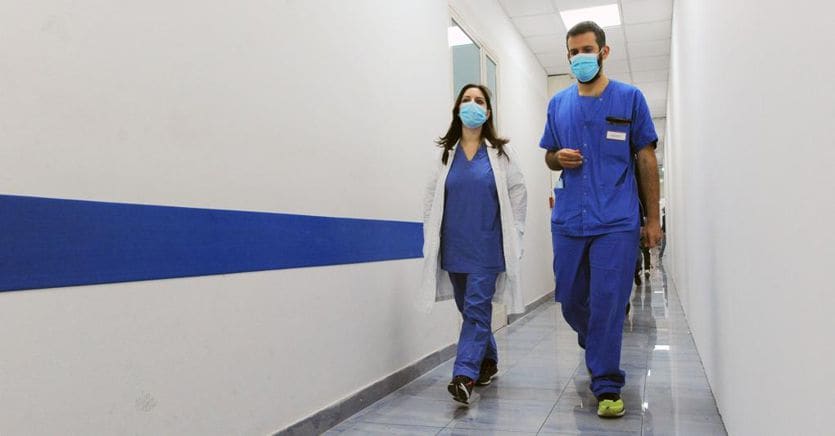After two winters with the mask, which has almost canceled the flu, a double wave of Covid and flu is now expected. A “twindemic” is a “twin epidemic”, for example the combination of Covid and seasonal flu. And there is currently a risk of a double wave.
Rezza: quite significant growth in hospitalizations
Also this week the number of Covid cases in our country tends to increase with 441 cases per 100 thousand inhabitants. And the Rt index also shows an upward trend reaching 1.18, therefore above what is considered the epidemic limit. To summarize the Covid data is the Director General of Prevention of the Ministry of Health, Giovanni Rezza. As for hospitalizations, the employment rate by Covid patients in medical departments and intensive care units is “8.2% and 1.8%, respectively, below the critical threshold, but with an increase quite relevant “of ordinary hospitalizations,” while intensive care rises slightly “. With the increase in the speed of circulation of the virus it is good according to Rezza “to maintain behaviors inspired by prudence and above all to do booster doses of vaccine, in particular for the most fragile people and the over 60s”.
Cases rebound from France to the United Kingdom
The increase in coronavirus infections also continues in France. Begun at the beginning of September, the latest wave continues its progression both in terms of cases and hospitalizations, according to the weekly budget made public by the health authorities across the Alps. Last week, the circulation of the virus progressed “strongly throughout the territory, in particular, among the oldest”, according to the balance sheet of Santé Publique France. A rebound in cases of contagion from Covid also in the United Kingdom, after more than two months of constant and generalized decline despite the now total absence of restrictions. The weekly data released on the basis of sample processing by the Office for national statistics (Ons) now indicate an average estimate of about one infected person in 50 in the country. Infections, specialists note (starting with the managers and medical consultants of the UK Health security agency), have peaked since mid-July. Underlining, however, that the trend does not raise “alarm” at the moment nor does it impose the need for new social or individual limitations; and should rather suggest caution towards the older age groups and the vulnerable, while the offer of a fourth dose of vaccine calibrated on the different sub-variants of the Omicron strain still prevalent, made available this month to the entire population over 50 .
The possibility of simultaneous infections
In addition to this, multiple simultaneous infections caused by different respiratory viruses could be encountered in autumn and winter. “Often a double infection leads to a more severe course of the disease and also to an increase in mortality,” explains Christian Wiedermann of the Institute of General Medicine and Public Health in Bolzano. «In England – explains Wiedermann – double viral infections have been detected in about 8% of patients who have contracted Covid. In cases of this type, the risk of having to mechanically ventilate patients doubles ». In the United States, health authorities predict up to 50,000 deaths related to the impending flu epidemic. In addition, 150 thousand annual deaths from coronavirus are estimated. Since the introduction of anti-Covid measures (interpersonal distance, hygiene, mask) in March 2020, the very low spread of the flu virus may have weakened the immune shield.
The “Australian” experience
Wiedermann predicts an increase in the number of cases in the current flu season, also based on the experience of “Australian” flu. Influenza infections there increased by 25% compared to 2019, explains the expert. “Wearing masks and maintaining interpersonal distance has drained the pelvis in which the flu virus develops. Precisely for this reason it has not been able to spread in the usual way. Our immune defenses have had fewer viral contacts. These contacts, in addition to vaccination, contribute to our continuous immune protection, ”explains Wiedermann.
